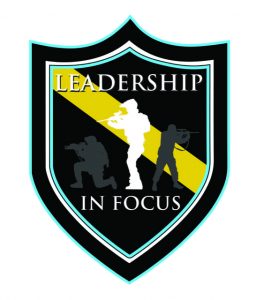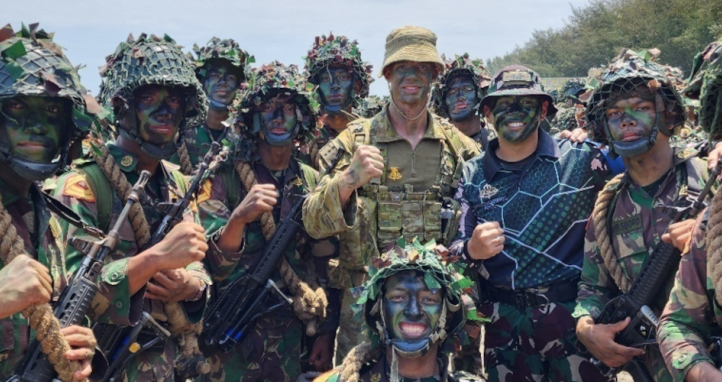
In this article I will examine how our Senior Non-Commissioned Officers (NCO) and Warrant Officers (WO) should reflect on the capability; fitness, endurance, character and resilience required to occupy the rear rank. I will use the Roman Legion as a historical testament to how these expectations and attributes have been forged in our senior soldiers. Moreover, I will focus on the Roman Legion Triarii as the equivalent of the modern Senior NCO and WO.
I will argue in support of the United States (US) Army policy of ‘can’t run, can’t lead’, and discuss whether this policy has value and merit in the Australian Army.
Lastly, I will view leadership through the prism of the Triarii and delineate the difference between leadership characteristics and principles.
Origin of the rear rank
Whilst in parade formation, Australian Army Senior NCO and WO occupy the rear rank, colloquially called the Cerefile. It is thought that this tradition can be traced back to the Roman Legion rear rank which was comprised of their most senior soldiers, otherwise known as the Triarii.

The Roman Legion is a term that can encapsulate all of Rome’s armed forces, and their dominance spanned 2 millenium. As their fighting supremacy evolved, there were notable changes in their application of weapons, tactics, composition and organisational structure; leading to a core of traditions and military expectations that have stood the test of time.
Not only were the Triarii the oldest and most experienced, they were also the most heavily armed. They were used in many tactical formations over time, but are famously notarised in the saying, ‘It has come to the Triarii’, as they were generally the absolute last line of defence if the forward lines were broken.
The Triarii stabilised the line and ensured the Manipulus (120 men) did not lose momentum; as well they prevented soldiers from withdrawing in pressure situations. The strength of the Manipulus was only as strong as its rear rank – these senior soldiers were the hard shoulder when chaos and fear in conflict reigned. Junior soldiers relied on the Triarii for mentorship, wisdom and instruction. Similarly, the Triarii often counselled officers on matters relating to tactics and training. The Roman Legion required every soldier to be physically and mentally strong, regardless of age or seniority. This standard of strength and fitness was often perceived as the crux of success.
How do our modern senior soldiers compare to the Roman Triarii? Do we have the fitness, stoicism, knowledge and endurance to hold our own in a modern setting?
Character
Authentic leaders reflect their beliefs. There is consistency between their values, ethical reasoning and their actions. They also consciously and actively develop positive traits such as confidence, optimism, hope and resilience in themselves and in others. They stand steadfast: they are the last line.
The Australian Army actively seeks people of good character to fill its ranks. The question is, to what degree has it succeeded? Does the character of the Triarii exist in our Army? What characteristics do the modern senior NCO and WO need to demonstrate in order to reflect the expectation of strong, dependable leadership? On a personal level, three characteristics stand out for me: courage, resilience and self-discipline.
Courage is having the conviction to do what is needed and expected of you, not just as a senior leader but as a soldier. A leader must be driven by an internal energy and deep commitment to do ones best, to achieve what is needed to succeed.
Senior soldiers use this energy and commitment to bring about change—even in the face of resistance; to do better; to do what must be done. They have the resilience to embrace change, to learn from failure and become better leaders. The modern day Triarii must be mentally and physically fit (strong), and be able to absorb internal and external pressures that leadership roles create. The senior NCO and WO rank demand the ability to remain stoic in the face of adversity, to become the pillar of strength for both junior and senior soldiers alike.
Finally, good leaders need the self-discipline and maturity to apply what is needed to be successful, to wake up early and do rigorous physical activity, to set standards and to resist the easy path so that they can inspire courage and resilience in others.
Although there are many characteristics that make a good leader, I believe these three are key to achieving success and establishing standards that encourage good followership.

Capabilities of the Senior NCO and WO
The Triarii were physically and mentally robust; they had to be to withstand the long marches, the environment and, most of the time, a formidable enemy. Roman Legion commanders enforced and demanded high standards from their senior leadership. This required officers and Triarii alike to encapsulate the very essence of the profession of arms: to lead by example, to set the standard and to embody the attributes of a soldier so that junior soldiers could emulate. I challenge you to reflect on this as you absorb the ‘can’t run, can’t lead’ policy noted below.
US ‘can’t run, can’t lead’ policy
The US policy of ‘can’t run, can’t lead’ is difficult to find in black and white, but is widely accepted as such in the US military. I took the opportunity whilst on operations in a coalition environment to ask several American Command Sergeant Majors their interpretation. Broadly, if you aspire to be a Command Sergeant Major, you cannot have a physical restriction (permanent) and must be able to complete the basic fitness test without limitations. A permanent restriction would mean you could not lead.
The Command Sergeant Majors I spoke to, support the policy, but agree there are some minor issues in the execution; However, the intent and direction is spot on. The Command Sergeant Majors I spoke to were all in-shape and fit the stereotypical look of a senior enlisted soldier within the US Army.
Implementation of such a policy in the Australian Army would no doubt be difficult. Could it be done? Should it? Is there an appetite for such a policy? I think with some modifications it could be implemented. I certainly believe it would resonate positively with soldiers and Junior NCO who expect their senior leadership to lead by example. At the very least, I believe it should be a discriminating factor when reviewing annual performance.
Principles of leadership behaviour
Australian Army Leadership doctrine dictates 10 principles of leadership:
- Be proficient
- Know yourself and seek self-improvement
- Seek and accept responsibility
- Lead by example
- Provide direction
- Know and care for your subordinates
- Develop the potential of your subordinates
- Make sound and timely decisions
- Build the team and challenge its abilities
- Keep your team informed.
Annex B to chapter 1, Land Warfare Doctrine 0-2, Leadership
These principles are a guide and should not be confused with leadership characteristics. The ‘Civilian’ equivalent is unsurprisingly very similar. In one well-regarded version, they are as follows:
- Know yourself and seek self-improvement
- Be technically proficient
- Seek and take responsibility
- Make sound decisions
- Set the example
- Know your people
- Keep people informed, provide direction
- be Accountable
- Supervise; and
- Train and develop your people
Instant Team Building by Brad Sugars
So… which of these military/civilian principles is the most relevant and/or important to the contemporary Senior NCO and WO? Admittedly, as I pondered this idea, I rocked back in my chair and processed the list. Forced to evaluate my own leadership principles, I contemplated examples of when I demonstrated these – behaving as I thought one ought – could I put a value on each one? I suspect you might be doing the same.
What did you come up with? Some principles resonate more with me than others, like: lead by example, develop the potential of your subordinates, know and care for your subordinates (does not mean making popular decisions) and be proficient. However, like me, I think you would agree we must demonstrate all of them. These 10 principles are the pillars of good leadership and are universally accepted. They are as relevant today as they would have been when the Triarii stood stoically in the rear rank centuries ago.
These principles go a long way to ensuring senior soldiers are worthy of the honour befallen to them by replicating the legacy forged by the Roman Triarii. As I mentioned earlier, these do not necessarily form the character of a leader, but as you would have gathered, they are closely aligned.
Conclusion
Australians have high expectations of our soldiers. Soldiers deserve Senior NCO and WO that are the best representation of these expectations. Further, it is assumed that whilst deployed on operations, everyone is able to fight (fire and move) without being a liability, requiring both physical and mental resilience. Who best to set this example; to display the will to win; to show the exemplar of what 'right' looks like.
Like the Triarii, our Senior NCO and WO should be the last line of defence, the steadfast and true leader who holds the team together when chaos might otherwise reign. This means they must be mentally and physically fit; they should personify principles of leadership, and demonstrate a dedication to improving their leadership character.
My challenge to you is to reflect on this article and determine whether or not you can meet the mark of an idealised contemporary Triarii.
Lead by example: set the standard.




